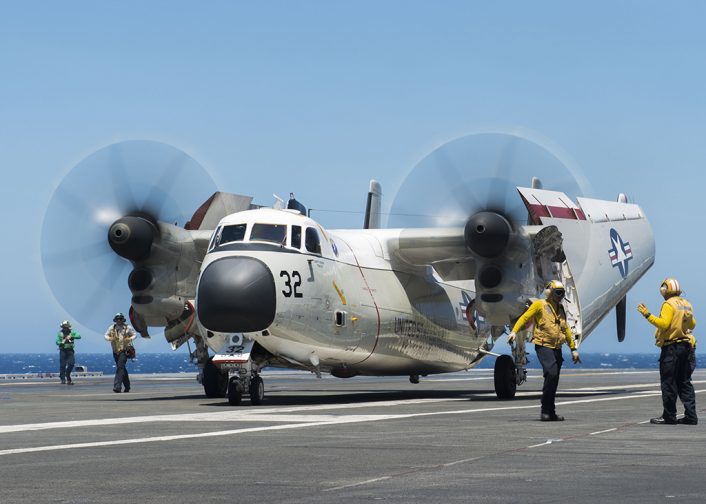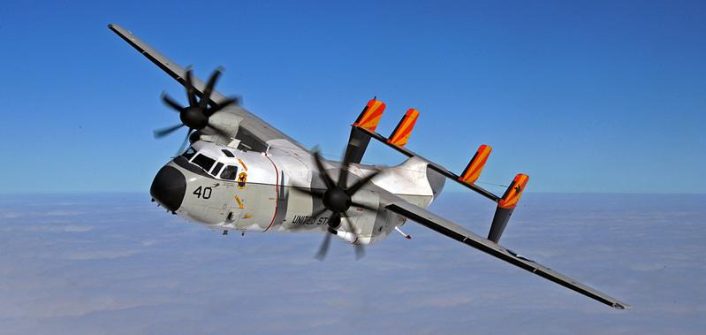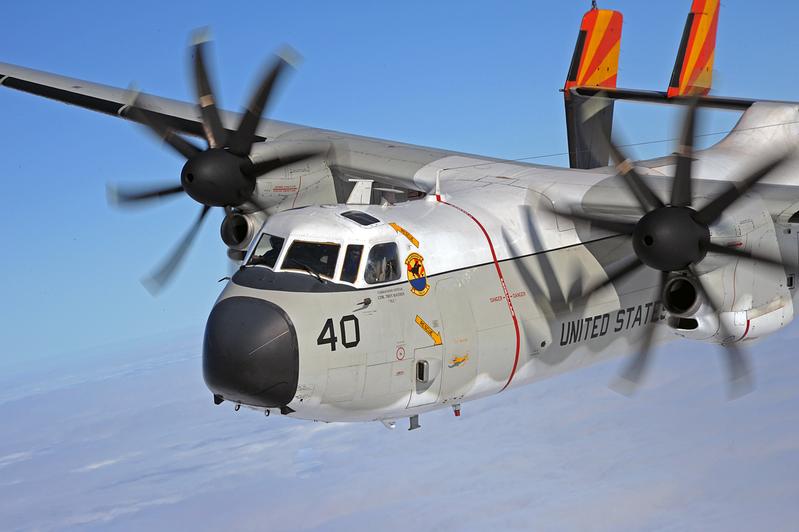C-2 Greyhound COD confirmed involved in the crash.
According to the U.S. Navy 7th Fleet, a United States Navy C-2A aircraft belonging to VRC-30 “Providers” carrying 11 crew and passengers crashed into the ocean southeast of Okinawa at approximately 2:45 p.m. local time on Nov. 22.
“Personnel recovery is underway and their condition will be evaluated by USS Ronald Reagan medical staff. The aircraft was en-route to the U.S. Navy aircraft carrier USS Ronald Reagan (CVN 76), which is currently operating in the Philippine Sea. USS Ronald Reagan is conducting search and rescue operations. The cause of the crash is not known at this time.”

The official release did not initially specify the type nor the unit of the aircraft involved in the crash. However, it seemed immediately quite reasonable to believe it is a C-2 Greyhound involved in a COD (Carrier Onboard Delivery) mission. Indeed, the Grumman C-2A Greyhound is a twin-engine, high-wing cargo aircraft, designed to perform the COD mission to carry equipment, passengers (including occasional distinguished visitors) supplies and mail to and from U.S. Navy aircraft carriers, “ensuring victory at sea through logistics.”
8 out 11 people on board have been found. SAR operation underway to find and rescue the missing ones.
According to the U.S. Navy:
Eight personnel were recovered by the “Golden Falcons” of U.S. Navy Helicopter Sea Combat Squadron (HSC 12). The eight personnel were transferred to USS Ronald Reagan (CVN 76) for medical evaluation and are in good condition at this time.
“Our entire focus is on finding all of our Sailors,” said Rear Adm. Marc H. Dalton, Commander, Task Force 70. “U.S. and Japanese ships and aircraft are searching the area of the crash, and we will be relentless in our efforts.”
USS Ronald Reagan is leading search and rescue efforts with the following ships and aircraft: U.S. Navy guided-missile destroyer USS Stethem (DDG 63); MH-60R Seahawk helicopters of the “Saberhawks” from U.S. Navy Helicopter Maritime Strike Squadron (HSM 77); P-8 aircraft from the “Fighting Tigers” of U.S. Navy Maritime Patrol and Reconnaissance Squadron (VP) 8; P-3 Orion aircraft of the “Red Hook” U.S. Navy Maritime Patrol and Reconnaissance Squadron (VP) 40; Japan Maritime Self-Defense Force (JMSDF) Helicopter Carrier Japan Ship (JS) Kaga (DDH 184); and JMSDF Hatakaze-class destroyer Japan Ship (JS) Shimakaze (DDG 172).
This is the 6th C-2 lost since the type entered active service (a prototype YC-2A was lost on Apr. 29, 1965, during a test flight resulting in 4 fatalities):
- On Oct. 2, 1969, C-2A BuNo 152796 from VRC-50, carrying 6 crew members and 21 passengers crashed in the Gulf of Tonkin en route from Naval Air Station Cubi Point to USS Constellation in the Gulf of Tonkin. All the 27 POB were killed but since their bodies were never recovered, they are listed as MIA (Missing In Action).
- On Dec. 15, 1970, C-2A BuNo 155120 from VRC-50 crashed shortly after launch from USS Ranger, killing all 9 POB (4 crew members and 5 passengers).
- On Dec. 12 1971, C-2A BuNo 152793 crashed en route from Cubi Point to Tan Son Nhat International Airport, resulting in the death of all 4 crew members and 6 passengers.
- On Jan. 29, C-2A BuNo 155122 crashed while attempting to land on the USS Independence in the Mediterranean Sea, killing both crewmen.
- On 16 November 1973, C-2A BuNo 152787 crashed into the sea after takeoff from Souda Bay, Crete. 7 of 10 POB died in the incident.
We will update this story as new details are made available.

Top image: file photo of a C-2 Greyhound









